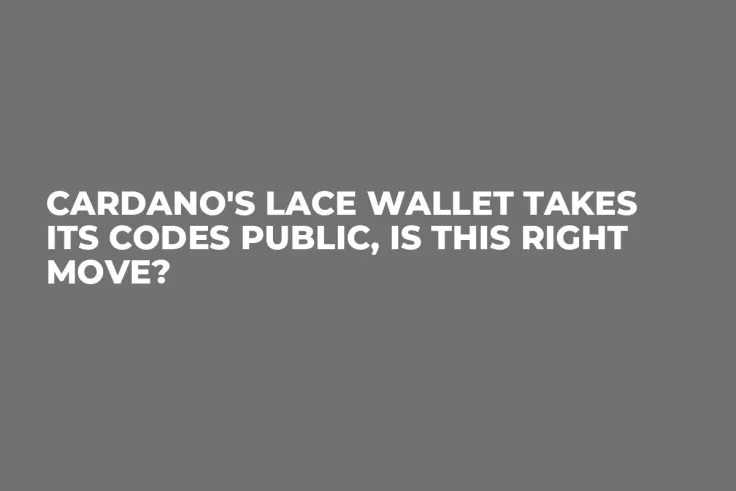
Disclaimer: The opinions expressed by our writers are their own and do not represent the views of U.Today. The financial and market information provided on U.Today is intended for informational purposes only. U.Today is not liable for any financial losses incurred while trading cryptocurrencies. Conduct your own research by contacting financial experts before making any investment decisions. We believe that all content is accurate as of the date of publication, but certain offers mentioned may no longer be available.
In April, Cardano launched its light wallet platform Lace in what signifies a strategic product launch to bolster the adoption of the blockchain's native tokens. The recent update as shared by Lace is that it has transformed into a decentralized open source light wallet platform. By publishing its codes for the world to see, Cardano says it is building on Web3.0's core principles of collaboration, full transparency and decentralization.
Lace is here, and is now fully open source. This new blog delves into the importance of open source software as a basis for collaboration and innovation, and includes a Contribution Guide for anyone to become part of the Lace ecosystem.https://t.co/O1M62Bg7d8
— lace.io (@lace_io) June 8, 2023
As reported by U.Today when the wallet was first launched, Lace was designed with so much engineering vigor that it is possible to keep custody of both Cardano tokens and non-fungible tokens (NFTs). By putting its code online, developers can now build a similar product that can largely benefit the world.
It is an essential time for Cardano to show transparency, considering the current onslaught of the United States Securities and Exchange Commission (SEC) against exchanges, which also indicted Cardano's native token ADA as a security.
While Input Output Global (IOG) has debunked claims from the market regulator, related moves to show its decentralized nature can go a long way to proving it is an utility token should it need to prove itself later on.
Building on legitimacy
Launching the Lace code as an open source protocol has underlying benefits not just for Cardano but for the broader Web3.0 ecosystem. As detailed in its announcement, the move is a show of legitimacy for what it is building. Anyone can go ahead to inspect what it is building and determine legitimacy, which may help people to make up their minds about trusting in the brand.
Cardano remains one of the blockchain outfits that maintains a robust developer profile, and with its best efforts going public, the protocol has solidified its mission of contributing to the evolution of the Web3.0 ecosystem.

 Dan Burgin
Dan Burgin Vladislav Sopov
Vladislav Sopov U.Today Editorial Team
U.Today Editorial Team